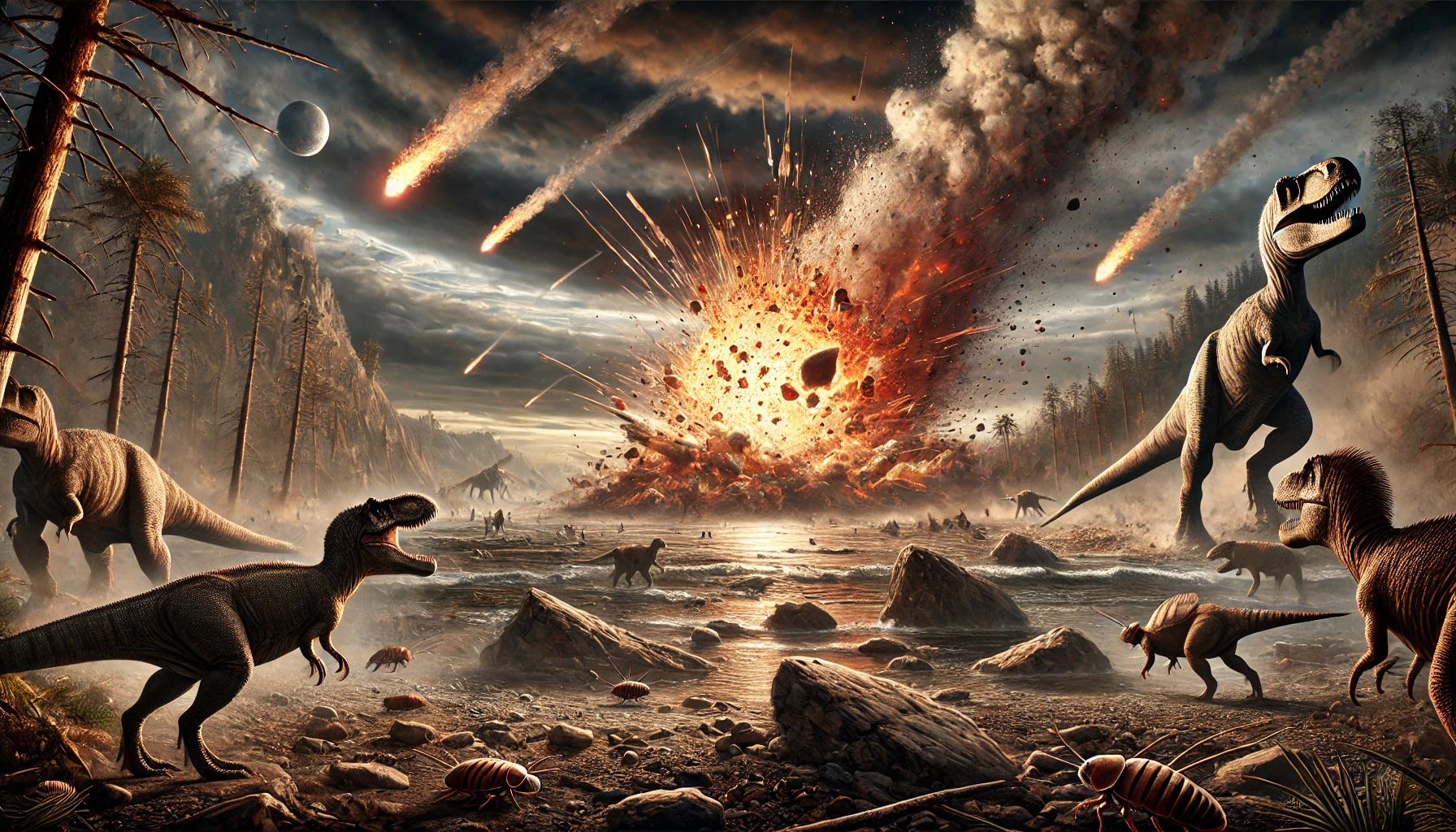66 million years ago, the asteroid known as Chicxulub crashed into Earth, triggering a chain of devastating events: earthquakes, volcanic eruptions, massive fires, giant tsunamis and a dramatic heating and then gradual cooling of the atmosphere. This catastrophe resulted in the extinction of about 75% of plants and animals, in particular all dinosaurs except the ancestors of modern birds. However, cockroaches managed to survive. How did they do it?

Secret of survival: Unique anatomy and behavior
The cockroaches’ flat bodies allow them to fit into the tightest of crevices. This was one of the key advantages that helped them take shelter during the sharp rise in temperature after the asteroid impact. Other animals couldn’t find shelter, but cockroaches used narrow crevices in the soil where the hot conditions were less destructive.
After the collision, the planet went into a “nuclear winter” — dust and ash blocked sunlight, leading to a drop in temperature and global famine. However, cockroaches, unlike many other species, were not fastidious eaters. They are omnivorous and can eat not only plants or animal remains, but also feces. This simple diet has allowed them to survive periods of severe food shortages.
Protection of the next generation
Another important feature is that cockroaches lay eggs in special protective capsules called oothecae. These tough shells, similar to dried beans, protect the embryos from physical damage, flooding and drought. With this “armor,” some cockroaches probably survived the worst impacts of the disaster while still in the developmental stage.
Cockroaches around us
Today, there are more than 4,000 species of cockroaches, and they have inhabited almost all climatic zones, from the tropics to the polar regions. Some of these species live close to people, causing a nuisance. They reproduce quickly, get into hard-to-reach places and can withstand many insecticides. In addition, cockroaches produce allergens that can cause asthma and allergic reactions in humans.
Cockroaches are more than just pests
Despite their negative reputation, cockroaches are of interest to scientists. Their anatomy and ability to move quickly inspire engineers to create robots capable of working in harsh environments, such as other planets.
These insects have proven their ability to overcome catastrophes that were beyond the capacity of dinosaurs. If a new meteorite ever falls to Earth, it is likely that cockroaches will survive it as well, unlike many other species, including humans.
Earlier we told you that scientists underestimated the risks of collision with giant asteroids.
Provided by news.yahoo.com


